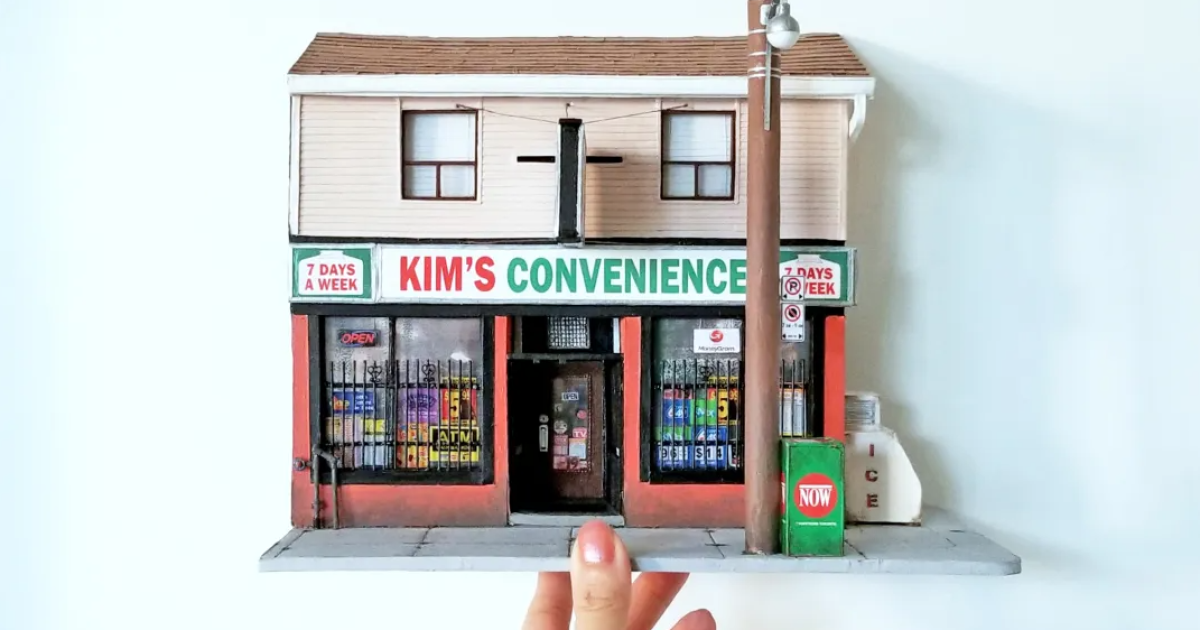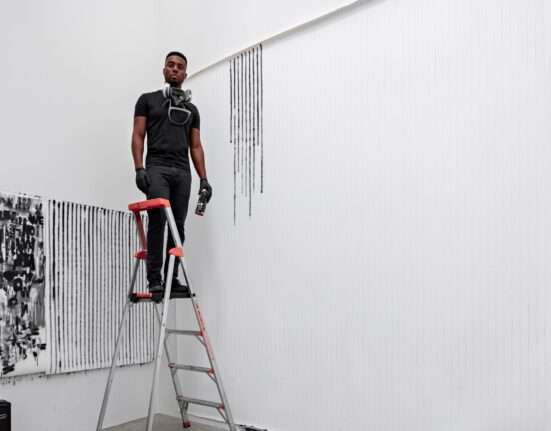Get the best of Vancouver in your inbox, every Tuesday and Thursday. Sign up for our free newsletter.
Tracy Ealdama had never given much thought to tiny things—until she had kids.
“I started making them these little toys out of wooden pieces, and then my pieces just kept getting smaller and smaller,” she says in a Zoom call. “I thought, ‘Wow: the smaller it got, the cuter it got!’ I just had this newfound love for miniatures, and then I started to go down the rabbit hole.”
The Vancouver-based miniaturist’s first work was a piece of fan art: a meticulous recreation of the eponymous store from Kim’s Convenience out of household items like toothpicks, Q-tips, and plastic packaging. The whole project took Ealdama about three months over the course of 2020—and by the end, she was hooked.
Ealdama is part of a growing wave of miniaturists who have taken up the craft in recent years.
Whether driven by pandemic-induced boredom or social media algorithms that understand the dopamine hit of a satisfyingly teeny thing, miniature art is undergoing a bit of a revolution as new artists expand the definition of what the artform can be.
For Ealdama, that means making diligently detailed scenes. Her business, Urthlings, specializes in miniature sets for things like toy photography and adverts—as well as custom-building edifices for anyone who would like to have a special place rendered in fun-sized format.
“There are train hobbyists, where they collect a smaller scale. There are miniature set designs, where you can get into the film industry; and then there are people that create vignettes, where it’s like the storefront or if people want to get their house replicated in miniature form,” Ealdama explains. Miniature art goes “beyond dollhouses, and that’s how I fell more in love with it.”
CBC hopped on the bijou bandwagon in 2022 with competition show Best in Miniature. Ealdama made it to the finals of the second season, showcasing her story-driven approach to even the more conventional challenges.
“It didn’t feel like a competition,” she reflects. “It felt more like an art residency, because I got to share the same passion with other like-minded artists.”
While still relatively niche as far as TV programs go, the show is, in Ealdama’s eyes, an important step in raising awareness for the artistry involved in miniature-making.
“If we can spread the word even further out, aside from social media, I think that will really help miniatures become more of a well-known, universal art form,” she asserts. “Even today, when people ask me what I do…the majority of them have never heard of it.”
Despite the blank stares, miniature art has a long tradition: archaeologists have discovered tiny seals from the Indus Valley Civilization and Minoans that are more than 3,000 years old. Nobles from Ancient Egypt to Han-era China were buried with tiny building replicas, while Western European sculptors embraced minuteness to create intricate religious scenes in wooden prayer beads at the turn of the 16th century.
The modern idea of miniatures—the dollhouse—has a history dating back around 450 years. They began life as educational pieces to teach young, noble women how to manage households (so progressive). Simplified versions later gained popularity as toys, while more elaborate constructs became collectibles.
Fátima da Porte, who got involved in miniatures around 25 years ago, has been running the day-long Vancouver Miniature Show for the past decade.
The most recent, which took place in May, was the 40th edition. Dozens of vendors and exhibitors showed their compact creations to a record crowd of 500 attendees.
“A lot of people during the Covid days wanted something to keep themselves busy, and dollhouses, in this kind of category, are absolutely magical,” she enthuses. “It’s a rising hobby.”
Vancouver’s dollhouse show isn’t one of the biggest on the continent, but it is growing. The province has some beloved miniature shops, too, like Vancouver Island’s miniLAND or North Vancouver’s Ross’ Treasure House.
Da Porte is very much a traditionalist, as evidenced by the Christmas-themed Victorian dollhouse that she shows off over video chat. She mostly works with wood, polymer clay, and crochet, and swaps for or buys pieces she can’t make herself.
Liang Ding, meanwhile, focuses on more contemporary designs. The downtown resident runs an Instagram account, @liang_makes_tiny_things, with over 20,000 followers, where she chronicles her 3D-printed crafts and shares photographs from her dollhouse window with real trains in the background.
Although she bought her first dollhouse kit in 2011, it took her until 2021 to finally put it together and begin filling it up.
“It was a Victorian structure that I’d gotten from a dollhouse shop in Toronto, but they didn’t have any modern-looking furniture,” Ding explains. “It sat empty for ages until I was like, ‘Wait a minute, people are making their own things; I can do this, too.’ ”
A graphic designer by trade, she easily applied her skills to printing miniaturized packaging, digitally modelling furniture, or painting the resulting creations. She’s far from alone in using modern techniques to create new work.
“I think there’s been an uptick as well in people making modern dollhouses as opposed to just Victorian-style dollhouses,” Ding says. Even at the big dollhouse shows she’s been to in Chicago and Philadelphia, “there’s an increase of people who are more my age, or even younger,” she adds, “who do things with more tools, like laser cutters and 3D printers.”
Part of the joy of miniatures is a sense of control. Being able to customize every millimetre of a space makes it a sandbox of possibilities: a blank slate that can be realized however you like. For Ding, that can mean dreaming up idealized versions of her real life.
“The miniature office-slash-craft room in my dollhouse is probably my favourite room, just because it’s my favourite room in real life—and in the dollhouse version, everything is neat and tidy,” Ding says, smiling. “It’s my little fantasy of what my house could be like, if I had a house instead of this 800-square-foot apartment.”
Ding found her community through social media: she has three close friends, dubbed the Miniature Motorcycle Club, some of whom have “hundreds of thousands of followers and all the fancy equipment.” Her own work has gone viral sometimes—such as photos of her cat investigating the dollhouse doorways—which only drives her to keep finding even more whimsical, surprising things to create.
“Sometimes I’ll be like, ‘I want to make a thing that nobody else has made before, but tiny,’” Ding explains. She shows off some miniature items inspired by her real life: an Instant Pot and a bike trainer, replicated in perfect one-twelfth scale.
“I like holding up a little thing,” she adds, “next to the big counterpart.”
Good things do, after all, come in very small packages.







